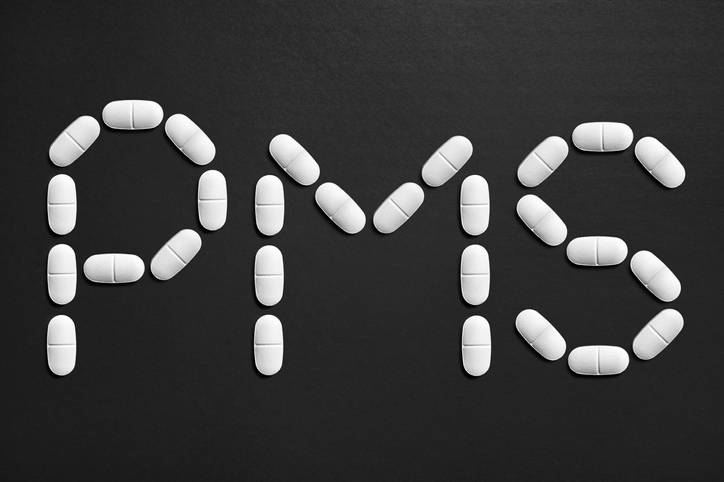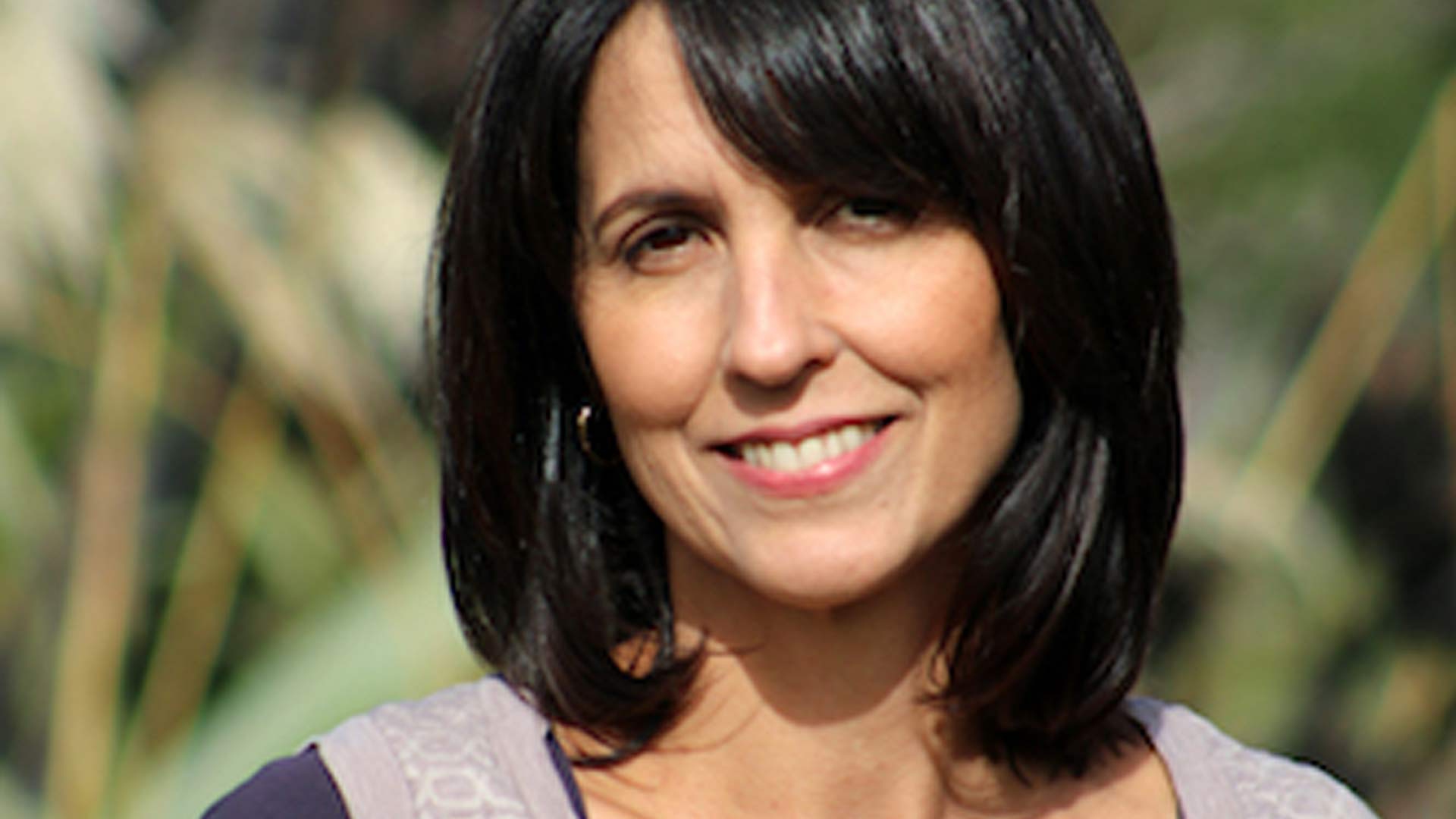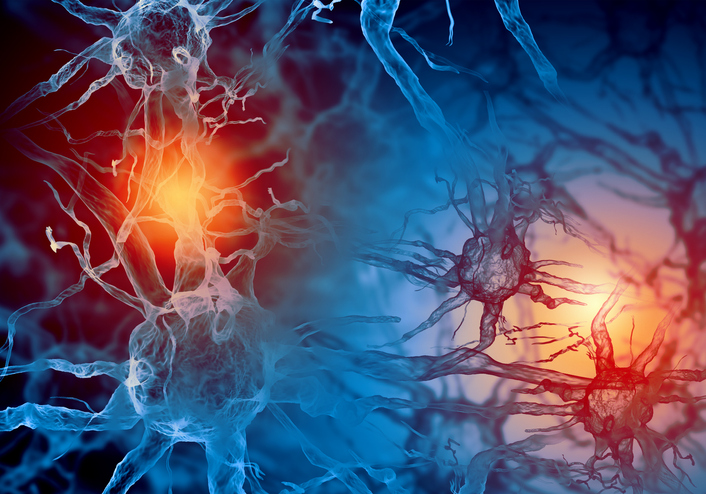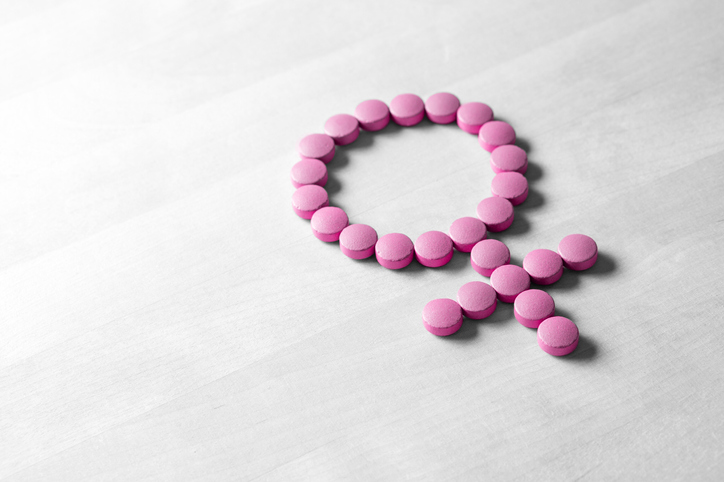by Dr Tony Coope
In their Guidelines (Dec 2007) on PMS, the Royal College of Obstetricians and Gynaecologists stated that ‘Although many complementary therapies for PMS are not evidence-based, it is generally agreed among health professionals treating women with PMS that an integrated approach is beneficial for the majority of women, and that ‘unlicensed’ treatments can be justified where evidence for efficacy and safety exist’.
In their summary of these therapies they include lifestyle changes, reflexology, cognitive behaviour therapy, light therapy, and a list of minerals, vitamins, and herbal preparations, most of which I have mentioned in Part 3.
But here we are addressing the ‘subtler’ approaches to PMS, ways which are much more difficult to quantify according to the criteria of evidence-based medicine. In my original list were homeopathy, healing, bodywork, talk and emotional therapies, stress management, the energy psychologies, monochromatic laser light, meditation and spiritual practices. To which we could add yoga, hypnotherapy, supercoherence therapy and an ever-expanding number of variations on a theme.
How Your Emotions Affect PMS
However, rather than go into the merits of each intervention, we can take a broader view and look at the principles underlying each category, to see how they might be effective. But to do this we need to change the way we usually think about dis-ease. I have said before that scientific medicine is very good at the ‘how’ of illness, but definitely not at the ‘why’. To fully understand something we have to ‘stand under’ it, ie ‘get to the bottom, or the root’, of it. Or, the opposite pole, we need to ‘rise above’ it to get a proper overview. Better still is ‘both/and’, rather than ‘either/or’.
Now we know that the right and left hemispheres of our brain are responsible for very different functions. The left is to do with logic, language, calculation, measurement, linear thought and analysis (subdividing one’s environment, categorizing) and intellect.
The right is concerned with spatial awareness, pattern recognition, all-in perception (an all-inclusive view of the world), thinking by analogy and symbols, holism (the inter-relatedness of things), meaning and intuition. From this we can see that what we call today’s scientific evidence-based world-view in medicine is that of the left brain only, which is just as unbalanced and incomplete as a view from the other extreme alone. Of course, we need a synthesis of both.
You may be familiar with this saying:
Watch your thoughts, they become words.
Watch your words, they become actions.
Watch your actions, they become habits.
Watch your habits, they become your character.
Watch your character, for it becomes your destiny.
In fact there is a stage missing here; somewhere between thoughts and actions, there should be feelings or emotions. A thought which is unconnected to a strong feeling (one that has real meaning for us) may or may not lead to an action, but one linked to strong emotions almost invariably does; (I couldn’t help myself, your Honour!). It is at this point that a thought, measured only in the brain as electrical activity, leads to emotion, a physical phenomenon mediated by neurotransmitters and hormones (molecules of emotion), and felt in the body.
I hope you can sense where I am going with this because we will never understand any illness and see it in its true perspective if we continue to evaluate it with only half a brain!
There is another, more ‘holistic’ and metaphysical way of looking at dis-ease. Starting in childhood, thoughts and emotions in reaction to negative experiences are held within if it is felt unsafe to express them.
They are too painful to experience consciously for long, so they are repressed, their energy stored in the cells of the body (especially the muscles), becoming ‘crystallized’ as subconscious beliefs and suppressed emotions. Negative beliefs change not just our view of the world, but the way we behave, relate to others, or take care of ourselves. All of which have major consequences in our lives.
Anger becomes bitterness or resentment, or if turned against self, depression and loss of self respect; the experience of rejection leads to withdrawal, that of abandonment to dependence, and so on. These patterns may have been passed down through many generations, creating a tragic continuum of difficulty and pain.
The key principle here is that anything uncomfortable that is not expressed will eventually seek resolution. Negative emotions not given expression will begin to affect the body’s physiology and biochemistry. We may label the results asthma, colitis, irritable bowel syndrome or PMS. In denial, we find the same patterns of thought and emotion accompanying us through life. Ultimately, the expression reaches the level of physical illness.
We may view this process in a negative light, with fear, or as the body revealing to us in progressively unavoidable ways just what it is within ourselves that we have to pay attention to and resolve. This theme has been around since I first qualified, yet never seems to reach mainstream medical writings or even the health media. Yet it is unfailingly reliable in diagnosis, and enables a true prevention of illness.
The Subtle Approaches to PMS
Applying this to PMS, the suppressed emotions are most often anger/rage, fear, guilt, and shame. They may originate in emotional or sexual abuse, or be absorbed by osmosis from the emotional ‘climate’ of family or culture. For whatever reason, a woman may find difficulty in accepting her own Feminine, which may be seen as an unenviable role, or associated with pain and emotional turmoil; (it is no wonder there is a high association of PMS with alcoholic families).
Or menstruation may be seen as shameful, sinful, ‘dirty’ or as an illness by mother (and her mother before her), the same belief being taken up, or resisted, by her daughters. Later, these unresolved tensions concerning femininity, sexuality or fertility are likely to manifest as the symptoms of PMS or other problems.
Looking again at our list of ‘subtle’ approaches to this syndrome, we can divide them into:
1. Things that attempt to ‘shine a light’ on the problem from outside, while hoping to turn on the light of understanding within, such as talk therapies like counselling and cognitive behaviour therapy.
2. Those that seek to change negative belief systems such as hypnotherapy, energy psychologies like the Emotional Freedom Technique and Psych-K.
3. Those that seek to shift a person’s state of being, or allow held-in emotions to come up into consciousness to be accepted and released such as healing, Reiki, yoga, massage, Hellerwork, Rolfing, monochrome laser light and bioenergetics.
4. Those that may turn on the light of understanding within, spontaneously releasing or dissolving suppressed emotions; and inspiring insights into negative beliefs, allowing resolution to occur, such as the supercoherence frequencies, meditation, and spiritual practices including yoga, chanting, selfless service and study of the wisdom traditions.
I have left out stress management because ‘management’ of a problem is always inferior to resolution, and many of the techniques give you something to ‘do’, which can be a stress in itself. Meditation and a spiritual understanding, however, can dissolve stress by changing your perception of it, of who you are, and of your place in the world.
Summary
Which approach, or combination, you take depends on how severe are your symptoms of PMS, how ready you are to go deeper in search of their source, what you are intuitively drawn to, and how open you are to the different levels available.
If you don’t wish to go an emotional route, at one end of the spectrum are some very effective homeopathic remedies; at the other, as a last resort, there is hysterectomy with removal of both ovaries. Whether this works physiologically by removing the hormonal cycle, or by removing the focal point of a negative emotion, is a moot point.
- - - - - - - - - -
Dr Tony Coope has over twenty years experience in General Practice, prior to which he spent four years as a hospital doctor, covering the specialities of medicine, surgery, paediatrics, geriatrics and emergency/trauma medicine.
In the early 1990’s he left general practice to explore an Integrated Medical approach including the use of nutritional supplements, bioidentical hormones and botanicals.
In their Guidelines (Dec 2007) on PMS, the Royal College of Obstetricians and Gynaecologists stated that ‘Although many complementary therapies for PMS are not evidence-based, it is generally agreed among health professionals treating women with PMS that an integrated approach is beneficial for the majority of women, and that ‘unlicensed’ treatments can be justified where evidence for efficacy and safety exist’.
In their summary of these therapies they include lifestyle changes, reflexology, cognitive behaviour therapy, light therapy, and a list of minerals, vitamins, and herbal preparations, most of which I have mentioned in Part 3.
But here we are addressing the ‘subtler’ approaches to PMS, ways which are much more difficult to quantify according to the criteria of evidence-based medicine. In my original list were homeopathy, healing, bodywork, talk and emotional therapies, stress management, the energy psychologies, monochromatic laser light, meditation and spiritual practices. To which we could add yoga, hypnotherapy, supercoherence therapy and an ever-expanding number of variations on a theme.
How Your Emotions Affect PMS
However, rather than go into the merits of each intervention, we can take a broader view and look at the principles underlying each category, to see how they might be effective. But to do this we need to change the way we usually think about dis-ease. I have said before that scientific medicine is very good at the ‘how’ of illness, but definitely not at the ‘why’. To fully understand something we have to ‘stand under’ it, ie ‘get to the bottom, or the root’, of it. Or, the opposite pole, we need to ‘rise above’ it to get a proper overview. Better still is ‘both/and’, rather than ‘either/or’.
Now we know that the right and left hemispheres of our brain are responsible for very different functions. The left is to do with logic, language, calculation, measurement, linear thought and analysis (subdividing one’s environment, categorizing) and intellect.
The right is concerned with spatial awareness, pattern recognition, all-in perception (an all-inclusive view of the world), thinking by analogy and symbols, holism (the inter-relatedness of things), meaning and intuition. From this we can see that what we call today’s scientific evidence-based world-view in medicine is that of the left brain only, which is just as unbalanced and incomplete as a view from the other extreme alone. Of course, we need a synthesis of both.
You may be familiar with this saying:
Watch your thoughts, they become words.
Watch your words, they become actions.
Watch your actions, they become habits.
Watch your habits, they become your character.
Watch your character, for it becomes your destiny.
In fact there is a stage missing here; somewhere between thoughts and actions, there should be feelings or emotions. A thought which is unconnected to a strong feeling (one that has real meaning for us) may or may not lead to an action, but one linked to strong emotions almost invariably does; (I couldn’t help myself, your Honour!). It is at this point that a thought, measured only in the brain as electrical activity, leads to emotion, a physical phenomenon mediated by neurotransmitters and hormones (molecules of emotion), and felt in the body.
I hope you can sense where I am going with this because we will never understand any illness and see it in its true perspective if we continue to evaluate it with only half a brain!
There is another, more ‘holistic’ and metaphysical way of looking at dis-ease. Starting in childhood, thoughts and emotions in reaction to negative experiences are held within if it is felt unsafe to express them.
They are too painful to experience consciously for long, so they are repressed, their energy stored in the cells of the body (especially the muscles), becoming ‘crystallized’ as subconscious beliefs and suppressed emotions. Negative beliefs change not just our view of the world, but the way we behave, relate to others, or take care of ourselves. All of which have major consequences in our lives.
Anger becomes bitterness or resentment, or if turned against self, depression and loss of self respect; the experience of rejection leads to withdrawal, that of abandonment to dependence, and so on. These patterns may have been passed down through many generations, creating a tragic continuum of difficulty and pain.
The key principle here is that anything uncomfortable that is not expressed will eventually seek resolution. Negative emotions not given expression will begin to affect the body’s physiology and biochemistry. We may label the results asthma, colitis, irritable bowel syndrome or PMS. In denial, we find the same patterns of thought and emotion accompanying us through life. Ultimately, the expression reaches the level of physical illness.
We may view this process in a negative light, with fear, or as the body revealing to us in progressively unavoidable ways just what it is within ourselves that we have to pay attention to and resolve. This theme has been around since I first qualified, yet never seems to reach mainstream medical writings or even the health media. Yet it is unfailingly reliable in diagnosis, and enables a true prevention of illness.
The Subtle Approaches to PMS
Applying this to PMS, the suppressed emotions are most often anger/rage, fear, guilt, and shame. They may originate in emotional or sexual abuse, or be absorbed by osmosis from the emotional ‘climate’ of family or culture. For whatever reason, a woman may find difficulty in accepting her own Feminine, which may be seen as an unenviable role, or associated with pain and emotional turmoil; (it is no wonder there is a high association of PMS with alcoholic families).
Or menstruation may be seen as shameful, sinful, ‘dirty’ or as an illness by mother (and her mother before her), the same belief being taken up, or resisted, by her daughters. Later, these unresolved tensions concerning femininity, sexuality or fertility are likely to manifest as the symptoms of PMS or other problems.
Looking again at our list of ‘subtle’ approaches to this syndrome, we can divide them into:
1. Things that attempt to ‘shine a light’ on the problem from outside, while hoping to turn on the light of understanding within, such as talk therapies like counselling and cognitive behaviour therapy.
2. Those that seek to change negative belief systems such as hypnotherapy, energy psychologies like the Emotional Freedom Technique and Psych-K.
3. Those that seek to shift a person’s state of being, or allow held-in emotions to come up into consciousness to be accepted and released such as healing, Reiki, yoga, massage, Hellerwork, Rolfing, monochrome laser light and bioenergetics.
4. Those that may turn on the light of understanding within, spontaneously releasing or dissolving suppressed emotions; and inspiring insights into negative beliefs, allowing resolution to occur, such as the supercoherence frequencies, meditation, and spiritual practices including yoga, chanting, selfless service and study of the wisdom traditions.
I have left out stress management because ‘management’ of a problem is always inferior to resolution, and many of the techniques give you something to ‘do’, which can be a stress in itself. Meditation and a spiritual understanding, however, can dissolve stress by changing your perception of it, of who you are, and of your place in the world.
Summary
Which approach, or combination, you take depends on how severe are your symptoms of PMS, how ready you are to go deeper in search of their source, what you are intuitively drawn to, and how open you are to the different levels available.
If you don’t wish to go an emotional route, at one end of the spectrum are some very effective homeopathic remedies; at the other, as a last resort, there is hysterectomy with removal of both ovaries. Whether this works physiologically by removing the hormonal cycle, or by removing the focal point of a negative emotion, is a moot point.
- - - - - - - - - -
Dr Tony Coope has over twenty years experience in General Practice, prior to which he spent four years as a hospital doctor, covering the specialities of medicine, surgery, paediatrics, geriatrics and emergency/trauma medicine.
In the early 1990’s he left general practice to explore an Integrated Medical approach including the use of nutritional supplements, bioidentical hormones and botanicals.
* This information is for general interest only. Every woman is unique. Your results may vary.
PMS encompasses a huge range of symptoms - and potential treatments. But some treatments are more successful than others.
Based on the foundation of enhancing natural progesterone, this 3 step plan could be a complete solution for PMS problems
Hear what doctors have to say about natural progesterone and its benefits
Based on the foundation of enhancing natural progesterone, this 3 step plan could be a complete solution for PMS problems
Over 35? Then you could still be at risk of PMS and those symptoms you thought you had left behind long ago
PMS responds very well to progesterone, but there are a few more things that can enhance your response and make a real difference
What exactly is Premenstrual Syndrome and how can you recognise its symptoms?
The causes and effects of PMS can be more complex and interrelated than mainstream medicine allows for.
In the third part of his series on PMS, Dr Coope looks at the treatments available for symptoms relief
In the fourth and final part of his series on PMS Dr Coope discusses the deeper and more gentle holistic approaches to symptoms relief
All information given on this site is for general interest only. Every woman is unique. Your results may vary.









































